Genesis, chapters six through nine, describes the most devastating natural disaster in the history of the planet. This was the worldwide Flood of Noah’s day. It was a deluge sent by the Creator of the universe to purge the earth of mankind’s wickedness and violence.
The views expressed in this article reflect those of the author mentioned, and not necessarily those of New Creation.
This catastrophe is especially relevant to young-earth geologists. They think that this event is responsible for a significant portion of the earth’s rock layers and fossils. Understanding the Flood is the key to understanding natural history. Unfortunately, there are many misconceptions regarding the worldwide Flood of Noah’s day, among both its skeptics and young-earthers. Creationists must do their due diligence to carefully study the scriptural account of this event. It is important that we have a good understanding of what the Flood was, as this can provide us with clues as to what we might expect to see in the geologic record, and what resulted from the recovery of the earth from this event.
What WAS the Flood Anyway?
Did the Flood Really Happen?
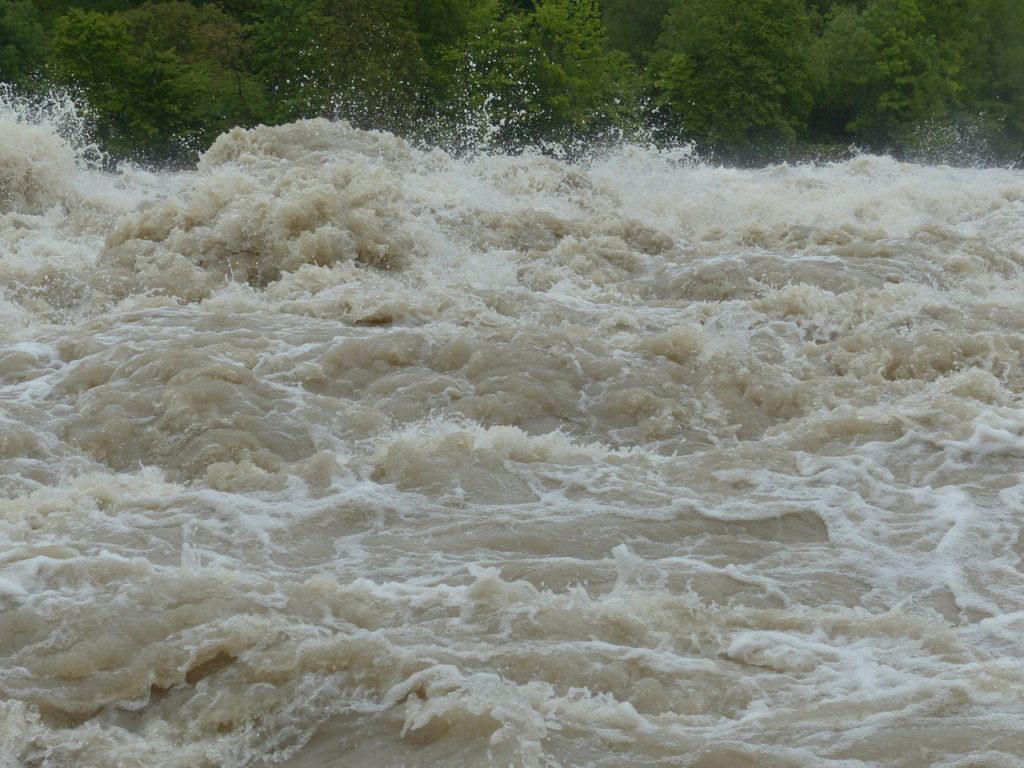
Sadly, there are many people, including some Christians, who think the Flood was nothing more than a myth. It wasn’t always this way. Up until the mid-1800’s, it was universally understood within the Church that the Flood was a real, global, historical event.
As far as non-Christians are concerned, this disbelief in the global Flood is understandable. They interpret the rock record beneath our feet as the result of the geologic processes we see at work today operating slowly and gradually over long timescales, with the occasional major catastrophe thrown into the mix every few thousand or million years. If our geologic record formed over millions and billions of years, it could not be the result of Noah’s Flood. Many think that the Bible plagiarized the Flood narrative from older Ancient Near Eastern texts, like the Epic of Gilgamesh. It describes a similar flood narrative.
For Bible-believing Christians, the matter is more complicated. The psalmist, the apostle Peter, and even Jesus Himself refer to the Flood as a historic event. There is great controversy regarding the extent of the Flood.
What was the extent of the Flood?
While many Christians do think Noah’s Flood really happened, they do not think that it covered the whole earth. They think it was a local flood, only devastating a region within the Ancient Near East. But what can we learn about the Flood’s extent from the text?
From the Mouth of God…and an Apostle
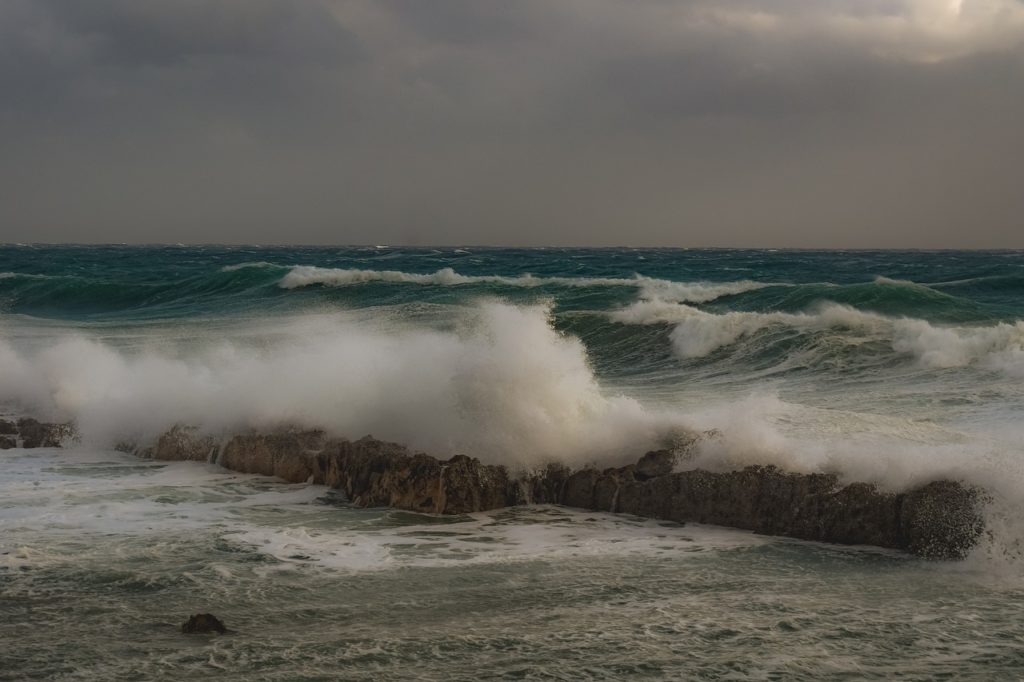
Both the apostle Peter (2 Peter 3:3-7) and Jesus Himself (Matthew 24:37-39) draw very explicit parallels between the Flood of Noah’s day and the return of Christ to the earth. Peter’s words are especially telling: “For they deliberately overlook this fact, that the heavens existed long ago, and the earth was formed out of water and through water by the word of God, and that by means of these the world that then existed was deluged with water and perished” (2 Peter 3:5-6).
Of particular emphasis here is that Peter is saying God used the same oceans He created in Genesis 1 to flood the world. The oceans were thrust from their basins and onto the land. This is clearly not describing a flood localized in the Ancient Near East. The Noahic Flood is described as the undoing of the Creation event. And since Christ’s return will have a global impact, it implies that the Flood had global impact as well.
All Means All
The Hebrew word translated as “all” or “every” in the Flood narrative is kol. It is used 60 times in this narrative! While this word can be used in a nonliteral sense, there is no reason from the text to delimit the Flood’s extent to a certain geographical region. A straightforward reading of the text seems to indicate that this is because there was no need to specify where the Flood happened―it was a worldwide Flood!
Purpose of the Flood
The Flood of Noah’s day was the response of God, grieved by the wickedness and violence of His creation. Targeted during this deluge was not mankind only, but also all air-breathing land animals and flying creatures. They too had corrupted their way upon the earth (Genesis 6:13). This only makes sense under a global Flood scenario. If the Flood were local, at least some flying birds, bats, and insects could make their escape.
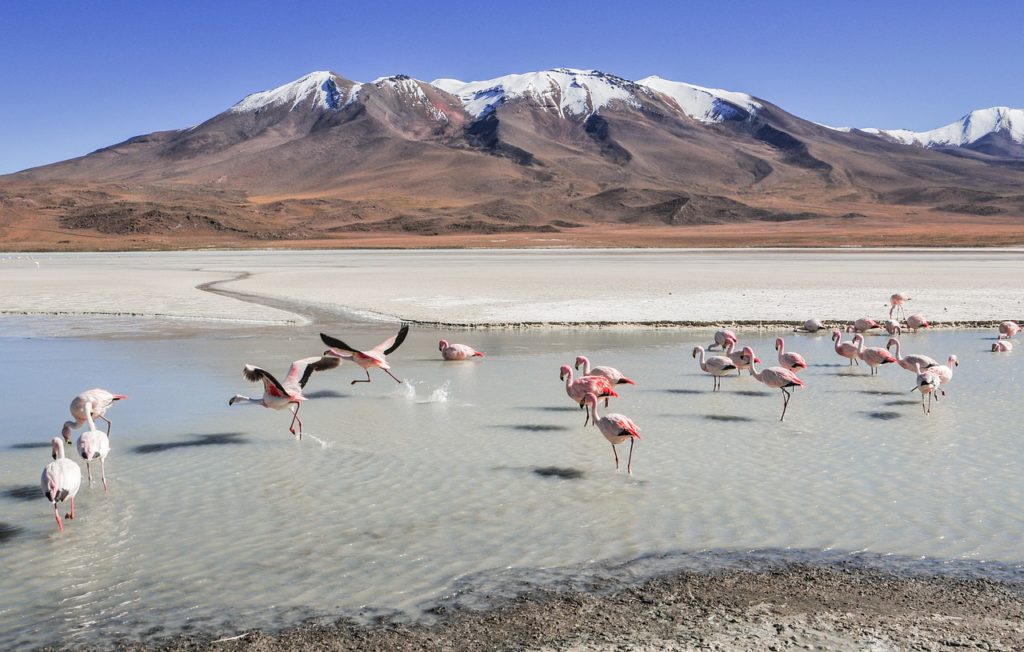
Height of the Flood
The narrative describes Noah’s Flood submerging the mountains of that time underneath 15 cubits, or ~22 feet of water (Genesis 7:20). And not just mountains, but all of the mountains under heaven. Since water always attempts to find its own level, this verse does not seem to make much sense if the Flood were not global.
Mabbul
A variety of words refer to regular floods in the Bible. One of the more common words is setef (Job 38:25, Psalm 32:6, Proverbs 27:4, Daniel 9:26, Daniel 11:22), nachal (Job 28:4, Psalm 74:15, Jeremiah 47:2). In some translations, yeh-ore (Jer 46:7f, Amos 8:8, 9:5) also refers to regular flooding.
Interestingly, it is not these words that describe the Noahic deluge, but mabbul. This word is never used in Scripture except when in reference to Noah’s Flood. This seems to indicate that the catastrophe it describes is unlike regular flooding events. It was a unique, cataclysmic, one-off event.
God’s Promise
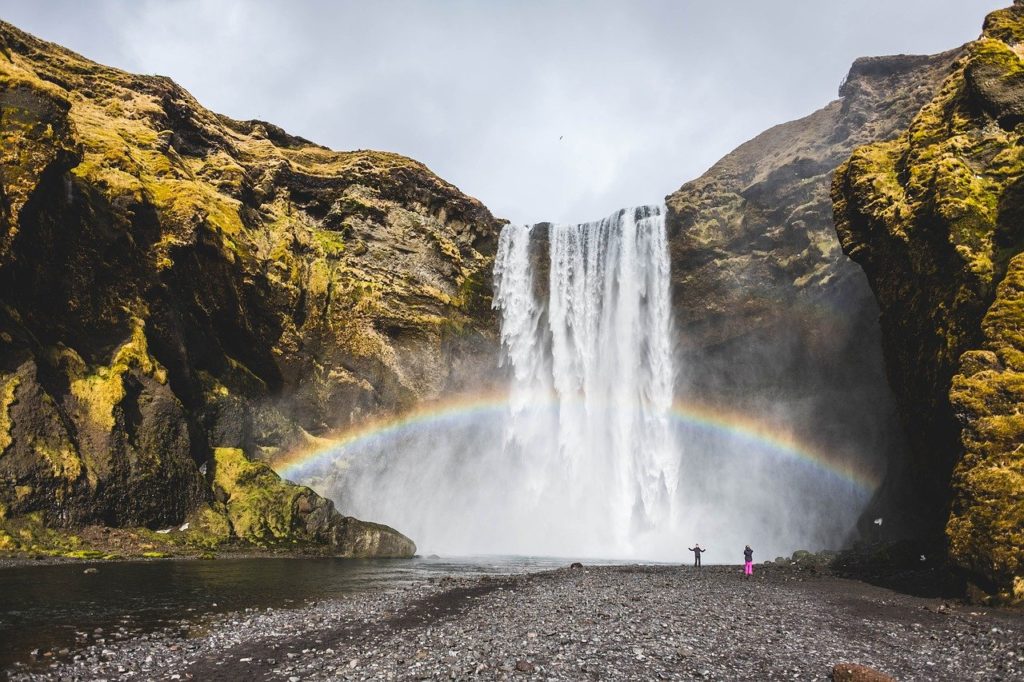
Once the Flood ended, God made the rainbow a sign of the covenant He made with Noah, his family, and every other living thing. He promised that the waters would never again become a Mabbul to destroy all life on the land (Genesis 9:13-17). If Noah’s Flood were merely a local event, then God has broken His promise many times over. There have been legions of destructive local floods since Noah’s time. In addition, God also assured Noah that the seasons and the day/night cycle would not cease. This implies that the Flood interrupted the planet’s seasonal cycles! On the contrary, these natural cycles are what cause local floods (e.g. India experiences a seasonal monsoon).
One Really Big Boat
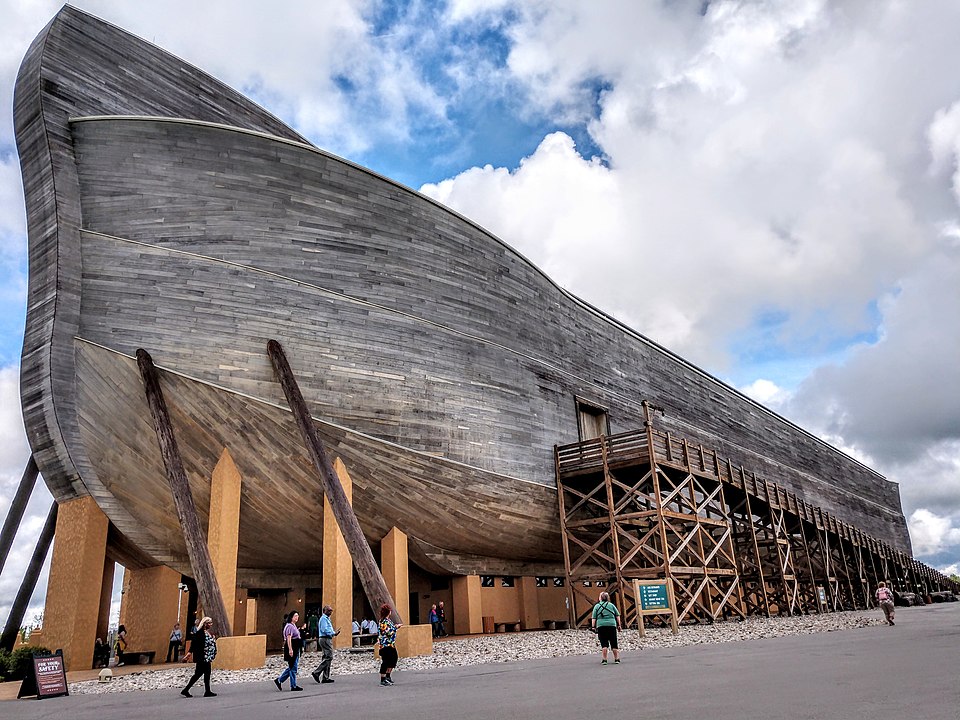
At more than 300 cubits long, 50 cubits wide, and 30 cubits in height, the Ark Noah built in order to survive the Flood was massive. As far as we know, the Ark was the largest boat up until the creation of the wooden vessels such as the 3rd century Tessarakonteres and Zeng He’s treasure ships of the Ming Dynasty. Such a vessel seems more suitable for survival on the open ocean, not in the comparatively shallow waters of a local flood in the Ancient Near East.
What REALLY Happened During the Flood? (Flood Phases)
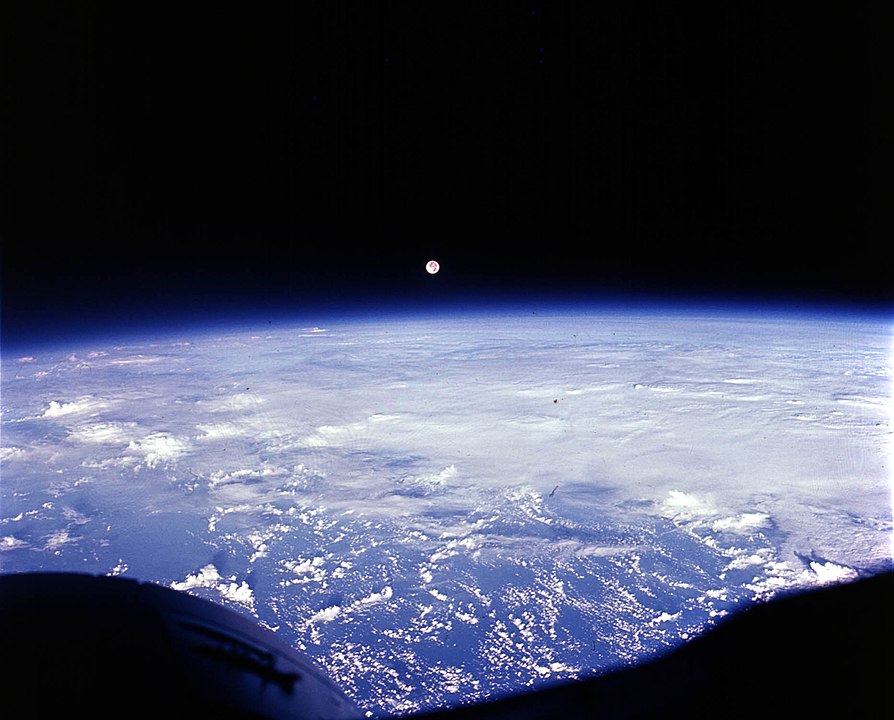
To most people, Noah’s Flood is little more than the result of 40 day and nights of rain. But the picture the Flood narrative portrays conveys a very complex event. The entire Flood lasted around a year from start to finish. It did not behave in the same way throughout its entire duration. Genesis 7 and 8 describe various phases of the Flood during its reign over the earth.
Unfortunately, we did not have a proper chronology of the Flood for quite some time. Hebraists were analyzing the text amongst themselves, while young-earth geologists were off doing their research on their own. But it is only by collaboration of these two parties are we able to get a complete picture of the Flood. One of these unions is the Cataclysm Chronology Research Group. This team encompasses a variety of Hebraists and a geologist, Dr. Andrew Snelling. Below, we can explore the distinct phases of the Flood. They can teach us what we might expect as evidence left behind in the geologic record.
Fountains Burst Forth
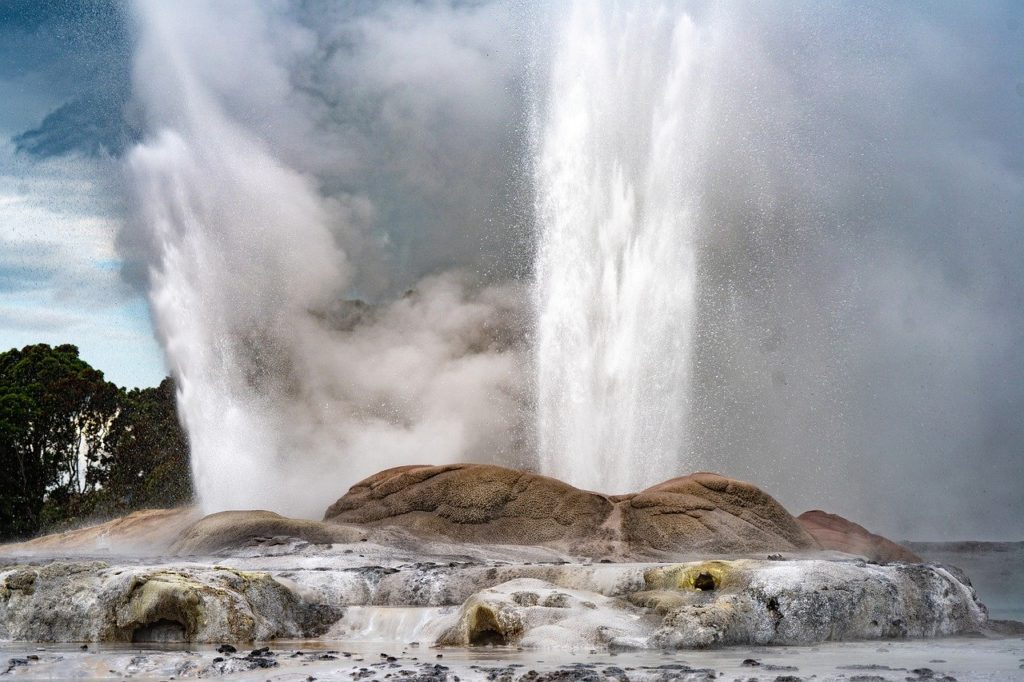
The Flood began on the seventeenth day of the second month of the six hundredth year of Noah’s life. On this day, the ‘fountains of the great deep’ burst forth and the ‘windows of heaven’ opened. These were the primary mechanisms for the Flood. Torrential rain fell upon the earth for 40 days and nights. The bursting forth of the fountains of the great deep may refer to water that shot up from the deep ocean, like a spring or a fountain.
Catastrophic as it was, we should note that the earth was not completely inundated overnight. The earth flooded in stages. Research suggests that the floodwaters became powerful (Genesis 7:17b) approximately 16 days after the Flood began.1
Floodwaters Rise
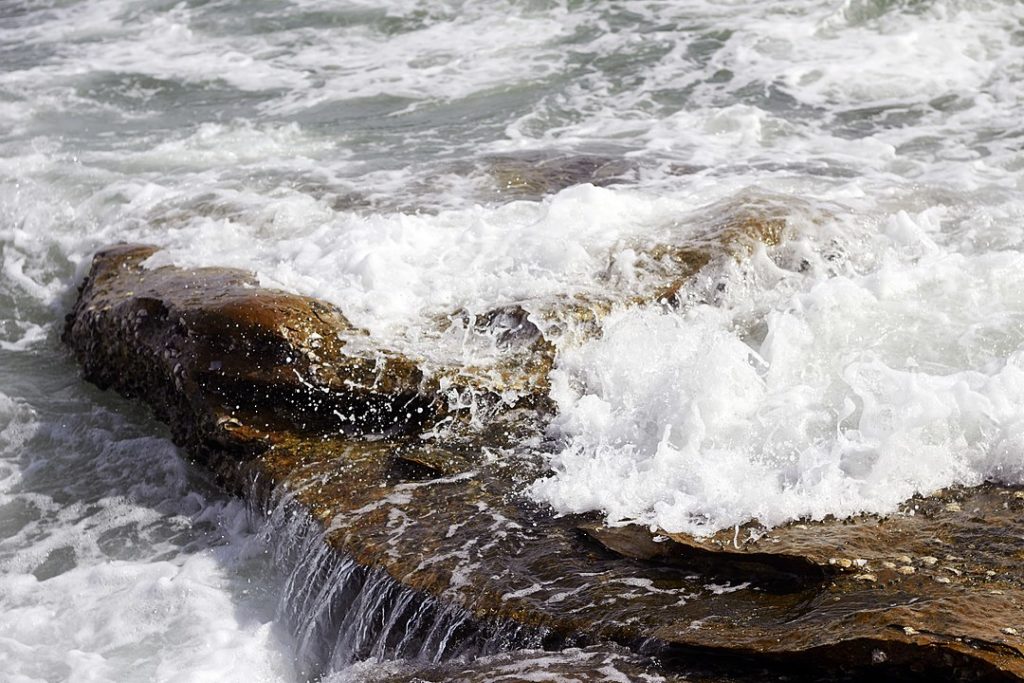
The floodwaters rose until all dry land was covered. This probably occurred somewhere between the 40th and 150th day of the Flood. Many have likened Noah’s Flood to a mega-sized flash flood. Aside from the fact that both result in flooding, they have very little in common. Flash floods are normally short-lived and send their turrets to the lowest possible elevation. Meanwhile, the Flood of Noah’s day was chiefly the result of the sea rising higher and higher over the pre-Flood land surface. Geologists call this a marine transgression.
The floodwaters did not cover the land surface in a tranquil fashion. They destroyed both the land and whatever lived upon it: all air-breathing, land animals and man (Genesis 6:13 and 9:11). Even birds were unable to escape. Jesus reports that the floodwaters violently swept them all away (Matthew 24:37-39).
It was during this phase that the floodwaters increased (Genesis 7:17b). Then they prevailed and increased greatly upon the earth (Genesis 7:18).
How Long Did the Flood Last? 40 Days? 150 Days? A Year?
Genesis 7:17 states that the ‘Flood’ was upon the earth only 40 days, while Genesis 7:24 says the floodwaters prevailed for 150 days. Is this a contradiction? Not at all. The confusion stems from the mistranslation of the word mabbul as the English word ‘Flood’ in Genesis 6-9. In reality, the 40-day Mabbul is not synonymous with the Flood as a whole. Rather, it was a phase of the Flood. It was the Mabbul with which God blotted out the pre-Flood land’s inhabitants. But the floodwaters themselves remained on the earth many more months before the land was dry enough for Noah, his family, and the animals to leave the Ark. Perhaps a better English rendition of the word mabbul would be ‘cataclysm.’ In fact, its Greek equivalent, kataklysmos, specifically and only referred to the Mabbul in both the Septuagint and New Testament (Matthew 24:37-39).
For the sake of clarity, we will use Mabbul only to refer to the rising floodwaters phase, and ‘Flood’ to refer to the entire deluge, from start to finish.
Total Submersion

Once all air-breathing, land-dwelling animals and humans had perished in a watery grave, the floodwaters went from being very, very powerful (Genesis 7:18) to just powerful (Genesis 7:19). By this point even the mountains of that time were submerged beneath over 20 feet of water.
Floodwaters Recede

When/After the torrential rain stopped and the fountains of the great deep ceased, God caused a wind to blow over the earth. This marked the beginning of a marine regression as the waters receded. Shortly after the Ark came to rest in the still-submerged mountains of Ararat (Genesis 8:4), the water ceased becoming powerful (Genesis 7:24). Later still, Noah opened the Ark’s window and released a raven (Genesis 8:7) and then a dove (Genesis 8:8-9) to see if there was any dry land. Neither found any.
Finally, the mountains appeared (Genesis 8:5). The Flood narrative does not tell us whether these mountains are re-emerged pre-Flood mountains, or mountains newly formed during the Flood. However, Psalm 104:8 seems to indicate that mountains did form during the Flood, as did ocean basins. These allowed the floodwaters to recede from off the landmasses. Note that the mountains of Ararat is a region and is likely not referring to what we recognize today as a single mountain, Mount Ararat, in Turkey.
Even as they returned to the ocean basins, the floodwaters were anything but tranquil. Genesis 8:5 records that the floodwaters went back and forth as they receded.2 Noah released the dove once more. Upon its return, it brought back an olive leaf. It would have clipped the leaf from a newly-sprouted olive sapling that found a place to grow as the waters fell back. After Noah released the dove a final time, it did not return, implying that it had found a place to call home.
Drying It All Up
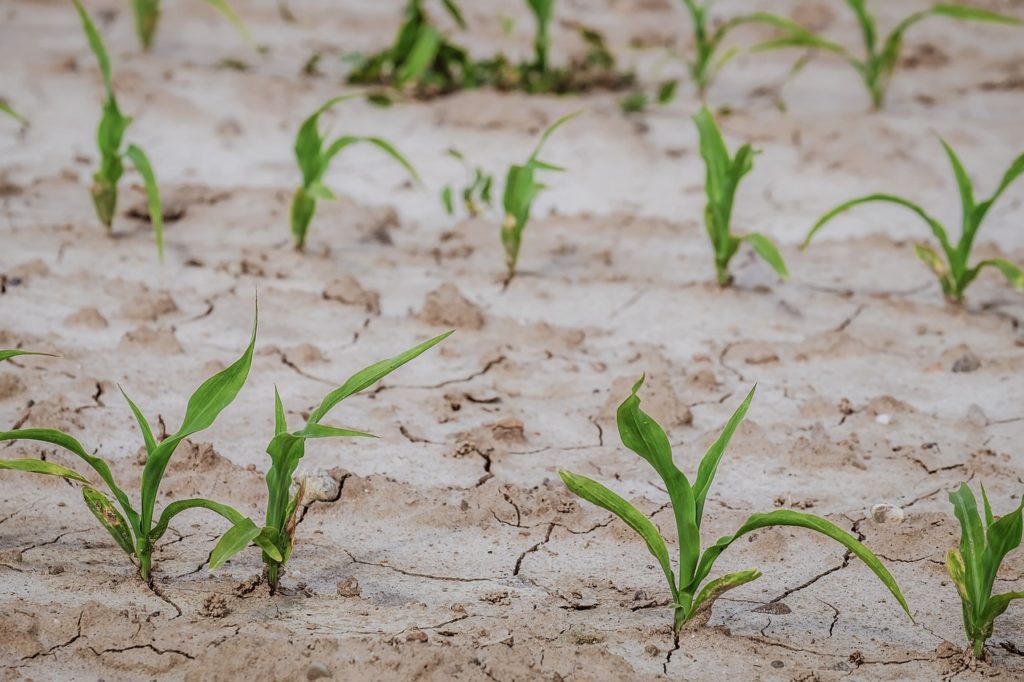
Even after the floodwaters had receded, God did not permit Noah and the rest of his passengers to leave the vessel. Likely, this allowed time to repopulate the lowest denominators on the food chain—like microbes, plants, and possibly insects—before the hungry animals left the Ark.
Earlier during the Flood year, prevailing torrents swept away fully-grown trees and other plants. Many of them survived, however, through their seeds, saplings, and sprigs.3 As the earth was drying, plant life would germinate and grow from these humble survivors. There is some debate among creationists as to whether insects were passengers on the Ark.4 If not, and they in fact survived off the Ark, then insect populations at the time could also have begun to refill the earth, pollinating plants and laying down a foundation for the reestablishment of the food chain.5
Three months went by between the time the land had fully reemerged and when God told Noah that they could leave the Ark.
Is there any Evidence for the Flood?
Evidence from Rocks and Fossils
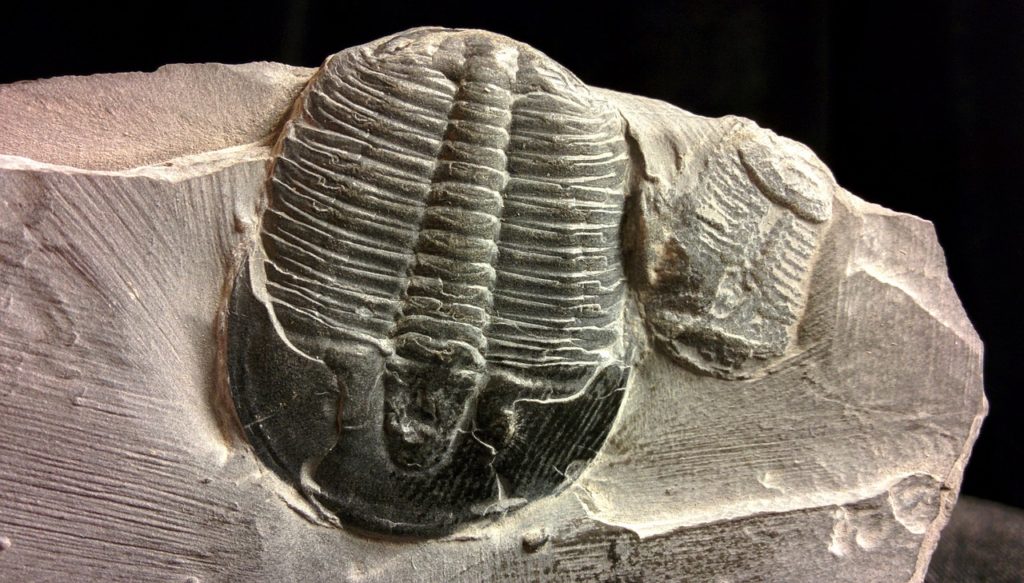
A worldwide Flood of biblical proportions would leave worldwide evidence behind. And this is exactly what we find! The continental surfaces of our planet are carpeted in thick packages of sand, shale, and carbonate mud layers that have been hardened into stone.6 They often cover entire regions or continents (sometimes even multiple continents!).
But it’s not just that we find fossil-studded sediment layers―these are marine layers, and the fossils within them are marine creatures, on the continents! The Greater Phyllopod Bed of western Canada,7 the Qingjiang fossil beds of China,8 Wren’s Nest in England, and the Beecher’s Trilobite Bed of the USA9 were likely the result of underwater flows picking up and carrying animals long distances—tens of kilometers in some cases—before depositing and entombing them in sediment layers. This is quite consistent with what we would expect to see if the earth was once submerged beneath the waters of a global Flood!
Evidence from Anthropology

Virtually every ancient culture around the world has a folk tradition that speaks of a ‘great flood’ sometime in their past. There are hundreds of these narratives. And while they do vary from place to place, they each contain very similar elements and characters.10,11
Many describe a favored family that survives a global flood sent to wipe out the wicked generation of that time. They often mention specific animals and people that were spared on a wooden vessel, and speak of how certain animals (usually birds) were sent to see if the floodwaters had gone down. Contrary to popular belief, these stories also occur in places where flooding does not regularly occur, if ever.12
This makes it extremely unlikely for these stories to be based on individual local flooding events. Rather, they are pulling from a universal memory of a world-destroying Flood that their distant ancestors (Noah’s family) really experienced.
Areas of Further Research
As we have seen, there is a great deal we can learn about the Flood from close study of Scripture. There is also much evidence for the Flood in the geologic record and in the collective memory of ancient cultures all over the world.
But there are unresolved questions we as young-earth creationists would like to know about the Flood. These have no bearing on the historicity of this event, but resolving them would bring clarity and help us better understand the Flood in its biblical and real-world context. It also presents a great opportunity for biblical scholars and scientists to work together and answer the toughest questions about the greatest catastrophe in our planet’s history.
When Did the Flood Occur?
The Bible does not give a specific date as to when the Flood occurred. Many young-earth creationists place it at around 350 years before Abraham’s birth at roughly 2000 BC. They obtain this estimate by adding up the ages given in the genealogies of Genesis 11. If correct, the Flood would have occurred around 2350 BC, or around 4,350 years ago.
This has produced several alleged problems. Abraham visits a well-established Egypt in his day. Egypt has written records that would suggest that it was founded around 3100 BC. This predates the most widely-accepted date of the Flood. In addition, some have questioned whether there was enough time after the Flood to form the post-Flood geologic record, and for humans to repopulate the earth and construct major cities. There are a few different ways of looking at these supposed problems.
Your Chronology is a Tad Off!
It is possible that the time it took to form the post-Flood geologic record and archaeological record was much shorter than previously thought.
Egyptian Chronology
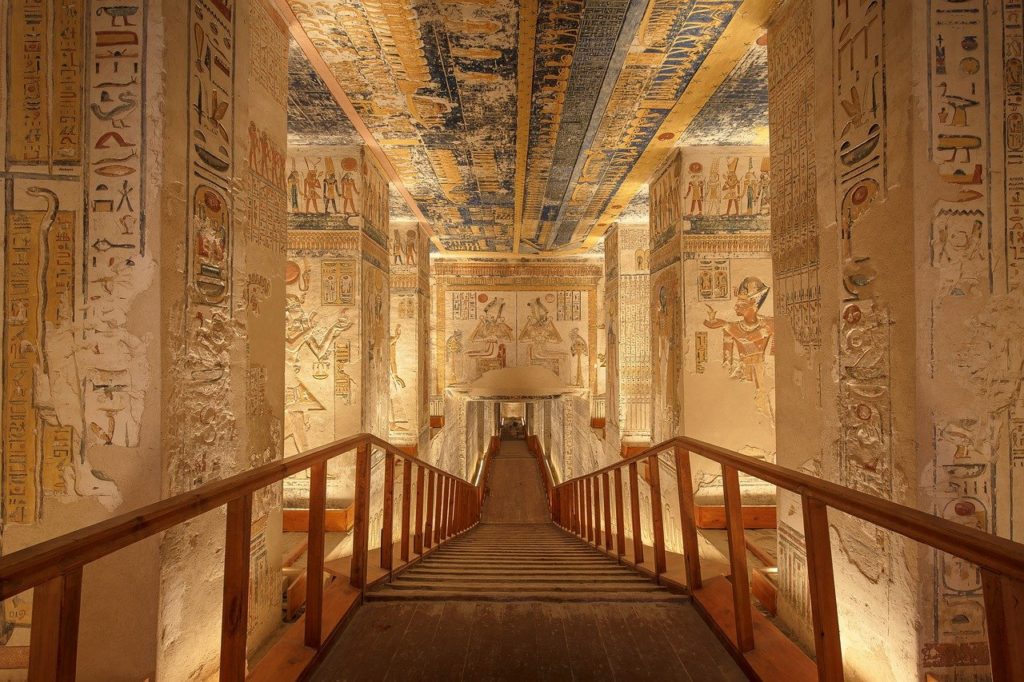
Take Egyptian history as a case in point. A single ancient source did not record the chronology of this ancient civilization. Historians constructed it after the fact, and in doing so they made many assumptions (e.g. pharaohs mentioned in Egyptian manuscripts never ruled at the same time). These greatly inflate Egyptian chronology. Even secular Egyptologists know that the conventional Egyptian chronology is much too long and must be compiled. How much? We cannot yet say for sure at this time.13
Pisco Formation
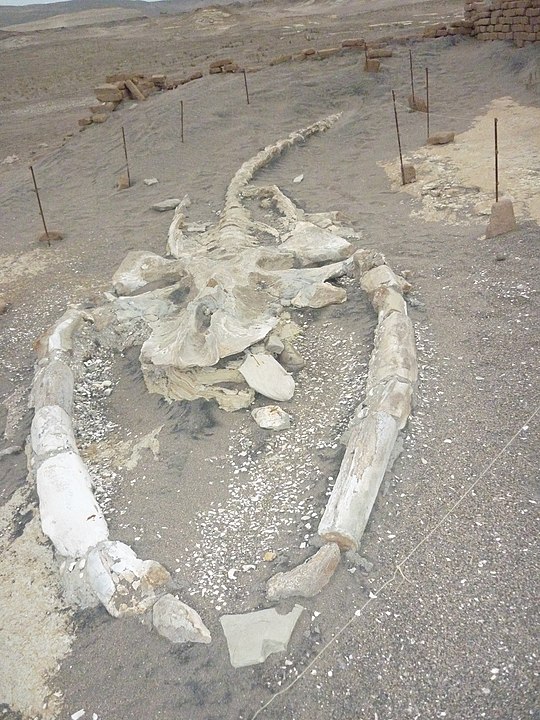
There is also evidence that the geologic record time can be shortened. One notable example is Peru’s Pisco Formation, a sequence of marine sedimentary rock layers along the coast of Peru. Based primarily on radiometric dating, most geologists think this deposit formed over the course of ten to twelve million years. They believe that grains of sand and diatoms (planktonic algae) accumulated very slowly, at a rate of a few centimeters every thousand years.
But the Pisco Formation also contains fossils of marine animals, like baleen whales. Their fossils are extremely well-preserved, and the bones are still arranged like they would be in a living animal. Even the baleen (bristle-like structures in the whales’ mouths) are intact. The state of preservation of these fossils suggests that they were buried within weeks to months of their death.14
Clearly, this is not compatible with sediment accumulation rates of a few centimeters every thousand years! It is much more likely that the Pisco Formation formed over the course of hundreds of years. At the very least, it suggests that we should exercise caution when we are told that the geologic evidence cannot be reconciled with the short span of time required by the young-earth timescale.
Masoretic? Septuagint? Gaps?
On the other hand, it is also possible that the time between the Flood and Abraham is greater than we have typically thought. Estimates placing the Flood at about 350 years before Abraham are based on patriarchal ages from the Masoretic text of the Old Testament. Calculations based on the Septuagint text, however, place the Flood at perhaps as many as 1,000 years before Abraham. It is also possible that there are gaps in the genealogies of Genesis 11. In The Genesis Flood, Whitcomb and Morris suggested that the Flood and Abraham’s time could have been 3,000 to 5,000 years removed.15
Ultimately, there are several options to consider. The “fact” that archaeological records and post-Flood geologic records predate the Flood does not in any way disprove the notion that the Flood happened. In reality, it provides a great research opportunity for an upcoming generation of young-earth creation scientists!
Mechanisms of the Flood
The ‘windows of heaven’ is a figure of speech for the 40 days and nights of torrential rain unleashed upon the pre-Flood world. But what about the bursting forth of the ‘fountains of the great deep’? The Hebrew word translated as ‘bursting forth’ is baqa, which means to ‘cleave, break open, or through.’ It is the same word that describes the breaking open of the ground that ended Korah’s rebellion (Numbers 16:31) and the bursting of new wineskins (Job 32:19). This ‘bursting forth’ seems to be describing fissures on the deep seafloor that result in the ‘fountains.’ But our current understanding is not enough to determine whether ‘fountains’ refer to the source, catchbasin, or the water itself.
How literal is the reference to ‘fountains’ bursting forth? Early research on the Hebrew text by Hebraist Dr. Steve Boyd indicates that while the Flood account itself is a sober, historical narrative, the reference to both the ‘fountains’ and the ‘windows of heaven’ may be more figurative.16 This would give geologists and other Flood researchers more scientific freedom they can use at their disposal to determine how these mechanisms operated during the Flood.
We also want to know how long the ‘fountains’ and ‘torrential rain’ lasted during the Flood. Genesis 7:4 specifically states that the rain would last 40 days, but it does not specifically state when the fountains of the great deep closed. Some think it could have been closer to Day 150 (Genesis 7:24-8:2), while others think they stopped at the same time the rain did.
40 Days or 150 Days?
When did the final air-breathing land animal not on the Ark breathe its last? Most young-earth paleontologists operate from the premise that this was on the Flood’s 150th day, based on Genesis 7:24. However, Dr. Steven Boyd has cited three lines of evidence suggesting that this would have occurred within the Mabbul, the first 40 days of the Flood.17
- Noah lived 350 years after the Mabbul, bringing his total lifespan to 950 years. This means he was still 600 years old when the Mabbul ended. If the Mabbul referred to the entire year-long Flood, Noah should have been 601 years old by its end and lived a total of 951 years.
- Genesis 7:12 specifically states that the Mabbul was on the earth for 40 days.
- The word “Mabbul” only appears in reference to the rise of floodwaters and again after the Flood. On the contrary, it is not used in association with the floodwaters after they have covered the earth, nor as they are receding.
According to Dr. Boyd, these three scriptural lines of evidence imply the following: if the Mabbul referred to in Genesis 7:23a blotted out all living beings, then because it lasted only 40 days, it blotted out all land dwelling life which was not in the Ark during that 40-day timespan. This has huge implications for how we might interpret the fossil record. More in-depth research of the biblical text is required before we can definitively say how long pre-Flood animals and humans survived during the Flood.
Conclusion
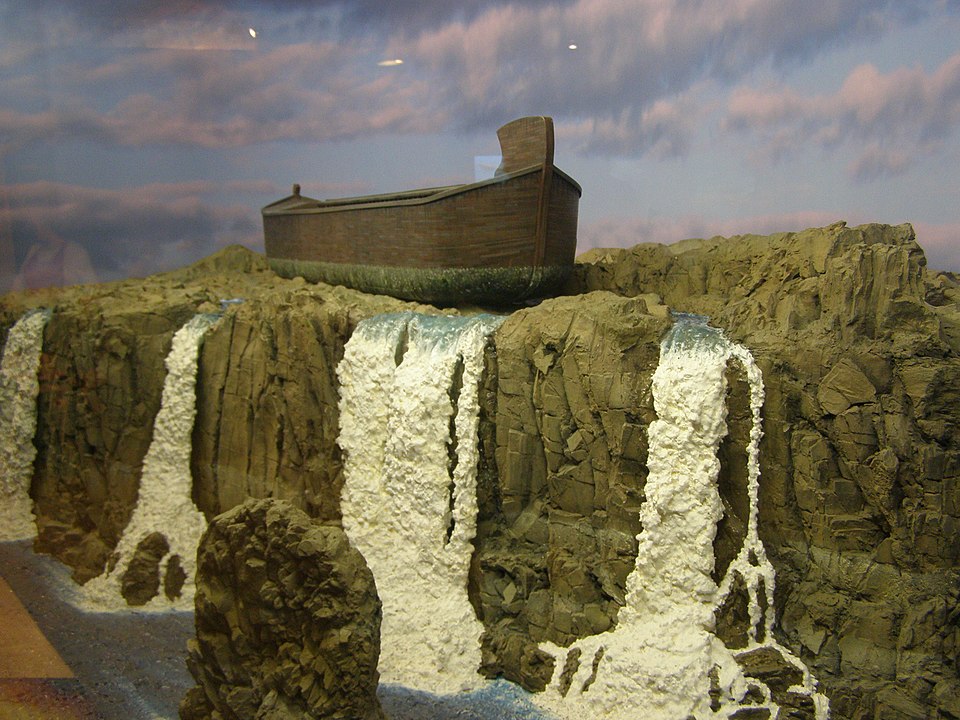
Without a sound understanding of the Flood, we cannot have a firm grasp on young-earth history. This is why it is important for Hebraists to team up with geologists so that both of them can lend their expertise to a better understanding of this worldwide, cataclysmic event.
Where Can I Learn More About Noah’s Flood?
- Noah’s Flood in Egyptian Hieroglyphics?
- Where is Noah’s Flood in the Geologic Record?
- The Search for Noah’s Ark
Footnotes:
- Boyd, S. 2020. “It’s for the Birds: Avian Fine-Tuning of Flood Chronology – How Knowing When Noah Opened the Window Opens a Window to Chronological Understanding.” Answers in Genesis, Answers Research Journal, 26 Aug. 2020. ↩︎
- Morris, J. and J. J. S. Johnson. 2012. “The Draining Floodwaters: Geologic Evidence Reflects the Genesis Text.” Acts & Facts. 41 (1): 12-13. ↩︎
- Allen, G. 2017. “How Did Plants Survive and Disperse after the Flood?” Answers in Depth. ↩︎
- Lacey, Troy. 2016. “Were Insects on the Ark?” Answers in Genesis. ↩︎
- Morris, J. 1992. “How Could All the Animals Get On Board Noah’s Ark?” Acts & Facts. 21 (3). ↩︎
- Peters, Shanan & Gaines, Robert. (2012). “Formation of the ‘ Great Unconformity’ as a trigger for the Cambrian explosion.” Nature. 484. 363-6. 10.1038/nature10969. ↩︎
- Bath Enright, O.G., Minter, N.J., Sumner, E.J. et al. 2021. “Flume experiments reveal flows in the Burgess Shale can sample and transport organisms across substantial distances.” Commun Earth Environ 2, 104. ↩︎
- Fu, D. et al. 2019. “The Qingjiang biota—A Burgess Shale–type fossil Lagerstätte from the early Cambrian of South China.” Science 363, 1338–1342 (2019). ↩︎
- Raiswell, R. et al. 2008. “Turbidite depositional influences on the diagenesis of Beecher’s Trilobite Bed and the Hunsrück Slate; sites of soft tissue pyritization.” Am. J. Sci. 308, 105–129. ↩︎
- White, Monty. 2007. “Flood Legends: The Significance of a World of Stories Based on Truth.” Answers Magazine, 2, no. 2 (April–June), 18–20. ↩︎
- For specific examples of flood legends, check out Nick Liguori’s excellent series in Answers in Depth for examples of such stories of native American cultures:
Flood Legends from the Americas, Pt.1: Continental United States
Flood Legends from the Americas, Pt.2: Canada and the Arctic
Flood Legends from the Americas, Pt.3: Mexico to South America ↩︎ - Bastion, D., Mitchell, J., Handbook of Native American Mythology, Oxford University Press, 198 Madison Ave, New York, NY 10016, 2008, p. 97. “Mythological narratives regarding a great deluge abound worldwide. In North America, flood stories are found not only where people lived near large bodies of water, but also in the drier interior of the continent.” ↩︎
- See the following source for a deeper dive into Egyptian chronology: Bates, G. 2014. “Egyptian chronology and the Bible—framing the issues.” Creation Ministries International. ↩︎
- Brand LR, Esperante R, Chadwick A, Poma O, Alomia M. 2004. “Fossil whale preservation implies high diatom accumulation rate in the Miocene-Pliocene Pisco Formation of Peru.” Geology 32:165-168. ↩︎
- Mcgee, David. “Creation Date of Adam from the Perspective of Young-Earth Creationism.” Answers Research Journal 5 (2012): 217–230. ↩︎
- Let’s Talk Creation. (2021, September 13). Episode 15: Pterosaurs, Cave Formation, and Windows in Heaven [Video]. YouTube. ↩︎
- Boyd, Steve W. “The Last Week before the Flood: Noah on Vacation or Working Harder than Ever?” Answers Research Journal, vol. 9, 17 Aug. 2016, pp. 197–208. ↩︎

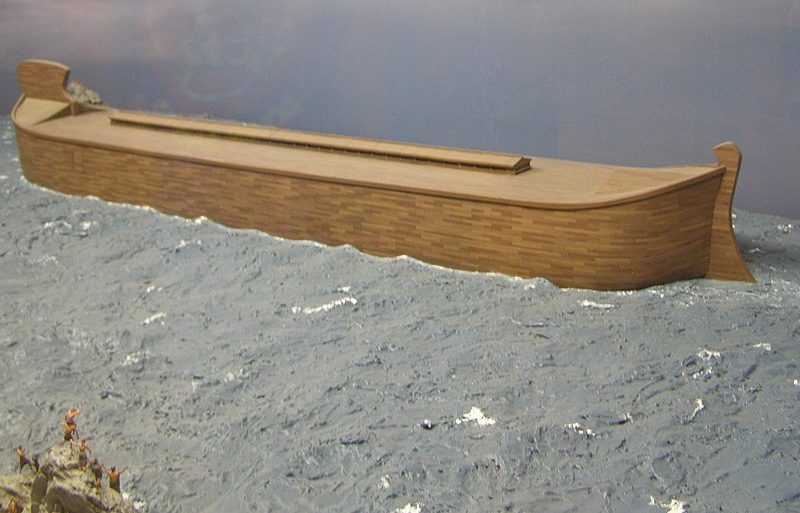



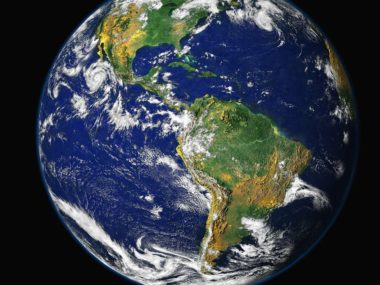

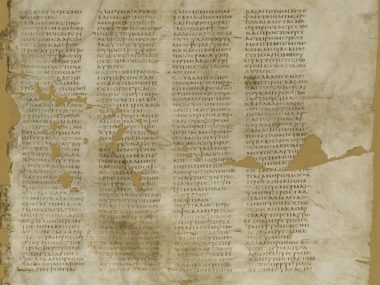




Hey this was another great summery . Really excellent. Ryan does great stuff really. I like the idea introduced the waters receded into newly created basins. I suggest all the previous ocean was only 200-300 feet everywhere. Allowing more glorious marine life. Then from moving coninents we got great great basins and these are where the water went.
i didn’t realize god sent a wind. That requires thought in how that affected things.
I believe this article errs by omitting the hydro plate theory, which elegantly explains the “fountains of the deep” and from where all the water came. Even today, it is estimated that there is far more (up to three times) water under the earth’s crust than there is in all the oceans combined. God’s power is awesome!
Hello Edward,
Thank you for taking the time to read my article. While Hydroplate Theory does explain some geologic features of our planet, it unfortunately is not considered to be valid by most young-earth geologists. They have outlined several problems with it that Dr. Walt Brown (the creator of Hydroplate Theory) has not yet addressed. Until Dr. Brown tackles these issues, we at the New Creation blog do not feel comfortable arguing in favor of his model. Currently, we believe that Catastrophic Plate Tectonics provides the best explanation for how the Flood occured.
For information on why we do not believe Hydroplate Theory to be valid, please check out the following articles:
Hydroplate theory: the strongest theory?
Analysis of Walt Brown’s Flood model
Hydroplate Theory—problems for trench formation in the Pacific Basin
One of the most important things that is not taken into account is that we are imposing the a creation account onto the inerrant and sovereign word of God. We are imposing the creation story of an unforgivable Holy Spirit blaspheming luciferian named Nicolas Copernicus. The reason why it is so difficult to reconcile the flood is the fact we don’t actually believe that Jesus who created all things is actually able to perfectly describe what He created. God did not create a universe, galaxies, solar systems or even planets, all of that is the imagination of a Lucifer worshiper and the fact is that he plagiarized the heliocentric satanic creation story from the cult leader Pythagoras who first proposed the Satan’s version of creation that is absolutely antithetical to what Jesus describes. Jesus states that He created a solid dome that He placed in the middle of water that is bound to the earth beneath in which he placed the lights, the greater light, the lesser light and the stars all of which are small and revolve in a circle above the earth. Nicolas Copurnicus was a luciferian who placed his god, the original sun god, the light bearer, Lucifer, in the center of creation. By his own words he states, “finally we have placed the Sun back in His rightful place” he made that statement after the king who was also the “head of the church” decided that it was a better theory than what those un-evolved, un-intelligent, stupid Israelites who actually got their world belief from the word of God. Instead of bowing down to the alter of the great philosophers Pythagoras and Copernicus just imagine how simple the flood of Noah is to explain when we have a true biblical view of creation where flooding an upside-down bowl with windows for releasing air letting the waters above flood down while the waters below flood up through the fountains of the deep. Jesus unequivocally states 3 times the authority that He gives us toward reading, quoting and applying His sovereign word “As it is written, as it is written, as it is written.” The moment we impose our world view on scripture, we usurp His sovereignty and authority. I hope and pray that every one who reads this will both be blessed and take time to ask the Holy Spirit to reveal to you why you believe what you belive.
Hello Chris,
Thank you for taking the time to read my article. I agree that it is extremely important that we adhere to Scriptural authority. This is why it is important for us to make sure we are understanding God’s Word correctly. In the same way scientific data has to be interpreted, we must also interpret data we receive from the Bible. We do not advocate interpreting Scripture in the sense of wooden literalism (Jesus’ use of the phrase “I am the door” in John 10:9-16 was a metaphor), but rather in a historical-grammatical fashion. More specifically, nowhere in the Bible is it described that a solid dome surrounds the Earth. I think you may be pulling this from the usage of the word “firmament” in some translations of Genesis 1. The word “firmament” is an English translation of the Hebrew word raqiya, which often refers to the action of spreading, beating, or hammering. Here, we have to be careful that we are not confusing the noun that is receiving the verbal action from the verbal action itself. For example, I can use a hammer on a piece of solid metal or a lump of soft clay. In Genesis 1, a better translation of the word raqiya seems to be “expanse.” So it is more likely that this refers to outer space, and not a solid dome surrounding the Earth. You can check out this article for more information.
Great article introducing new thoughts about the flood. Love reading articles that prove the Bible is true history.
Thank you, Shirley! I’m glad you found the article informative!
Well written article. Christian does a great job covering multiple viewpoints w/out dogmatically taking one. Well done
Thank you for your feedback, Michael!
Christian,
Thanks, buddy for doing the research to put this together. I totally enjoyed every bit of it!
A fellow believer
Author: James M Doherty
Bought With A Price
“Things My Dad Taught Me”
Thank you, James! I really appreciate your feedback.
There is a lot of geological evidence that totally refutes the Great Flood. A Christian Geologist named LG Collins published a comprehensive paper on the subject. Search for “twenty one reasons noah’s flood never happened” and you will have the truth.
Hello JG,
I am familiar with Dr. Collins’ article. The points he brought up have been addressed by Answers in Genesis geologist Dr. Andrew Snelling. Click here to see that video.
I don’t think videos are the proper medium for discussing 21 geological claims that the flood never happened. If there are papers refuting Dr Collins claims, I am interested in reading them but so far I am not aware of a single one. Sources are important in science and anything that comes from “Answers in Genesis” is an instant dismissal as far as I am concerned. It fails the most basic of credibility tests.
Your statements are absurd!
it is false when evolutionists say that “There is no geological evidence for a global flood.”
Actually if there is .
In early March 2020, scientists Benjamin Johnson and Boswell Wing claimed in Nature Geoscience that some 3,200 million years ago the ancient earth was completely covered in water, and that there was not a single continent standing above sea level.
In 2013, Writing for the New York Times (9/19/13), Carl Zimmer described a global catastrophe that, instead of ending life, allowed it to evolve. Building on the ideas of Paul Smith (Oxford University) and David Harper (Durham University), who hypothesized a “combined plate” model for the causes of the explosion, Zimmer invoked a global flood.
Like his Science article, “Causes of the Cambrian Explosion”, he mentioned the great flood as a possible abiotic process for the explosion, in his combo plate of possible causes:
“Large sea level rise in the early Cambrian, but not earlier, led to the flooding of these interiors and triggered a series of Earth system responses, including extensive erosion and mobilization of weathered rock and regolith and rapid input of calcium, phosphate, and other ions into the oceans Calcium concentrations in seawater nearly tripled in the early Cambrian, and this input may have directly facilitated the origin of biomineralization Phosphate input provided a flux simultaneous nutrient supply to shallow water areas.”
http://www.sciencemag.org/content/341/6152/1355.summary
The Peters and Gaines paper they referenced, from Nature in 2012, uses the Great Unconformity as evidence for a global flood.
https://www.nature.com/articles/nature10969
although they did not use the phrase “global flood”. Instead, they referred to “widespread continental denudation during the Neoproterozoic followed by extensive physical reworking of soil, regolith, and basement rock during the first continental-scale marine transgression of the Phanerozoic.”
https://crev.info/2012/04/complex-animals-just-add-sediment/
So, the claim that the earth was never under water is false, there is evidence that it was under water until evolutionists admit it, the debate is when it happened.
Great work, Ryan. You might find my article interesting:
https://answersingenesis.org/the-flood/flood-legends/myth-flood-myth/
Thank you, Nick! I will check out your article. By the way, I found your articles on native American flood legends to be a great and informative resource!
You have indicated that creationists do not have a Flood chronology as yet. I believe we do now. See my Answers Research Journal article, “A New Flood Chronology Based on Seven-day Creation Cycles,” published April 13, 2022. You can be excused for not not knowing about this path-breaking article because of its recency. It has been peer-reviewed and approved by Ph.D. scholars and theologians, some with expertise in O.T. Hebrew exegesis.
Hello Warrens,
Thank you for your feedback! I actually have read your paper in ARJ. It was a very eye-opening read and I have plans to cover it in a separate article that is currently being reviewed by our editor. It should be published on the blog in the very near future!
Good article .
I am very glad that there are scientists who defend the truth of the book of genesis!
Hopefully in a future article they will refute some statements in the wikipedia entry on creationism and flood geology who are unfairly accused of Pseudoscience.
Blessings Chris!!!